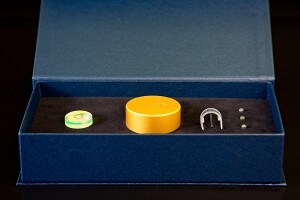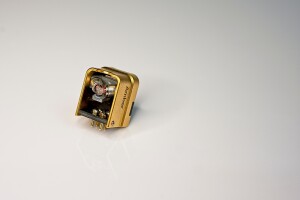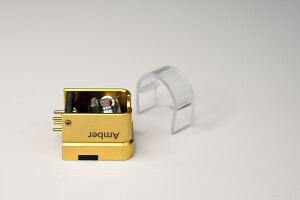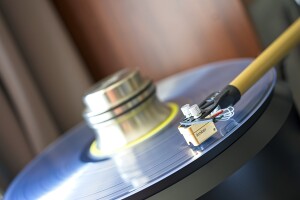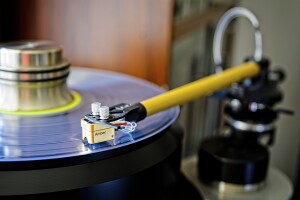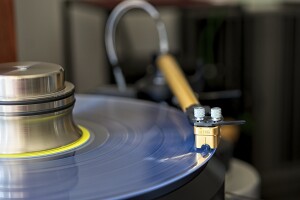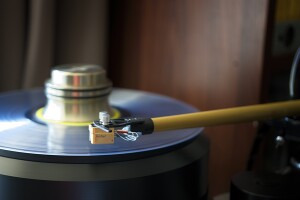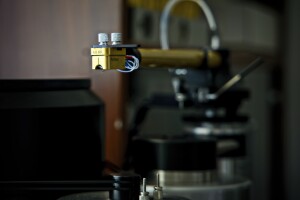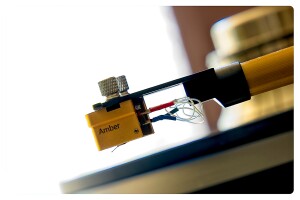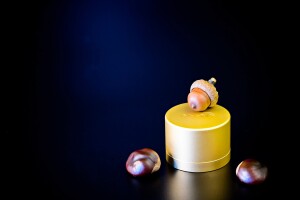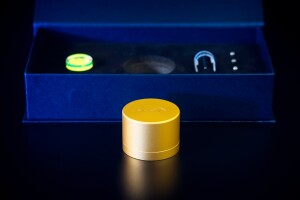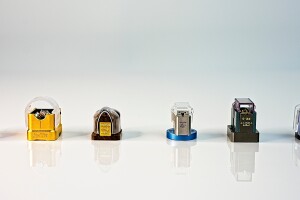It took a few decades before Allnic Audio products were (finally!) properly introduced to the Polish market thanks to the Gliwice-based 4HiFi, the new brand’s distributor. The first delivery from Korea included five products, and two of them quickly found their way to my place. Let’s take a closer look at the top moving coil cartridge in the current lineup, the Allnic Audio Amber MC.
Introduction
When I heard that the 4HiFi would become Allnic Audio’s distributor I got really excited. Obviously I’d read many rave reviews before, but even more important was my own experience with one of the Korean brand’s products. A few years ago by pure luck I hosted one of Allnic’s phono preampliers in my system, and since then the story has become sort of an anecdote. This is how the story goes. One day, out of the blue, a friend from Slovenia called me asking if I could help his friend from Italy buy a second-hand product here, in Poland. What are friends for, right? I agreed, carried out the transaction and as sort of a thank you I could keep said phonostage for a few weeks to check it out. To be honest, when it came to sending the device to the actual buyer in Italy I had a hard time parting with it. Had I known what a treat this device was, particularly for the price, I would have bought it for myself. It was a tube device, great looking, in great condition, and great sounding, a real bargain. I hadn’t known much about the device or brand before, as it had never been sold in our country; hence, only a handful of people had actual experience with either. Interestingly, those who bought some Allnic Audio products from abroad, rarely sold them on the second-hand market. But the owner of this phonostage did and it was sort of a once in a lifetime opportunity that I missed. Funny thing is, I can’t find any photos or information about the device, so I’m not even sure which model it was.
Before I move to the subject of this review, let me offer you some basic information about Allnic Audio. Interestingly, telling the story of his company, Mr. Kang Su Park goes back almost to the beginning of the 20th century. It was back then, in 1916, when one of the Western Electric engineers developed an alloy based on nickel and iron, today known as Permalloy. It quickly found its application in the audio industry, and even today it is still often used, for example in amorphous core transformers, considered to be among the best there are. As it says on the manufacturer’s website, all Allnic Audio signal transformers feature Permalloy cores. The brand’s name itself, Allnic or All Nickel Core Transformers already suggests that the cores of all transformers used by this manufacturer contain nickel (in the form of Permalloy).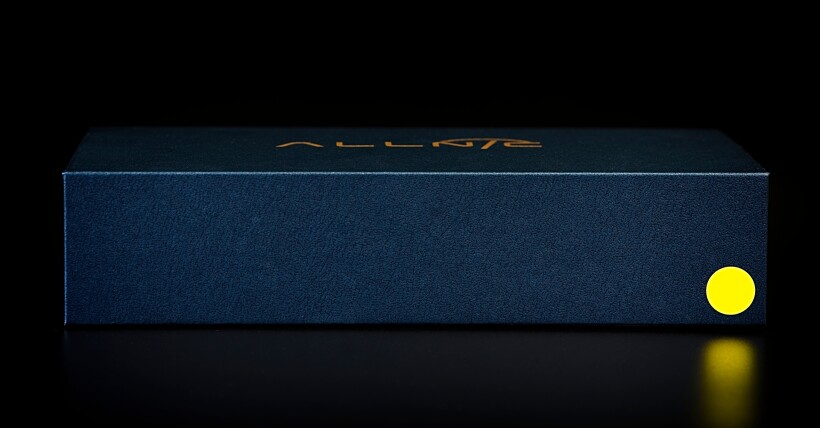
Another element of Mr.Kang Su Park’s, the head of Allnic Audio, philosophy is the use of coupling transformers instead of capacitors in the gain stages. According to the manufacturer, the production of transformers with Permalloy is expensive and difficult, but the results obtained with them are worth the effort. The thing is, as it reads, such transformers can transfer even more than 90% of the signal, while the efficiency of capacitors is about 5%. The manufacturer also emphasizes that the use of preamplifiers with transformers at the output stage in conjunction with solid-state amplifiers additionally protects the latter because these transformers are able to block over-voltages that could potentially damage an amplifier.
The history of the Korean brand began in 1997 with a stereo amplifier with two 300B tubes per channel. Later, more amplifiers, stereo and mono ones but still featuring the legendary triode, as well as preamplifiers, were added to the lineup. It was only in 2008 that the first Allnic Audio phono preamplifier, the H-1500, hit the market, and 2011, when the first amplifier using tubes other than the 300B (KT120 in this case) in the output stage was introduced. In 2014, the Korean manufacturer presented another phonostage, the H-5000 DHT (DHT stands for Direct Heated Triode – directly heated triode), which I am mentioning because it is most likely (as I’ve already mentioned, I cannot find any pictures or related emails) this particular model that delighted me those few years ago. Last year (2020), the company presented two new MC cartridges, the Rose and the reviewed Amber. This year they added a new entry-level phono preamplifier (review pending) the H-5500, to the lineup. In the current portfolio, apart from tube amplifiers, preamplifiers, phonostages and cartridges, you will also find signal and power cables.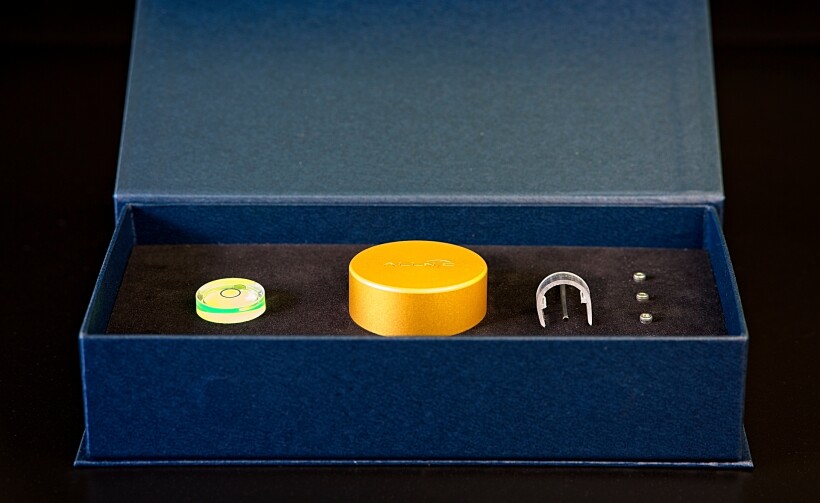
Interestingly, among the products listed chronologically on the manufacturer’s website, there are only two, the above-mentioned new cartridges, and yet I am sure that there was at some point another model available called Puritas. Its characteristic feature was the body made of solid ebony. Even earlier, there was also the Verito Z pickup, also featuring a wooden body. I know for sure about these two; maybe there were even more of them. They were omitted from the list for some reason, I guess, simply by mistake. I decided to mention these two so that people who do not know the brand would not think that these are the first cartridges ever offered by Mr. Kang Su Park. As it states on the manufacturer’s website, all Allnic Audio cartridges are designed to reproduce music using a mechanism that emulates the LP cutting lathe’s cutter head, under an assumption that this way such pickups will be able to most accurately read all the information from the vinyl’s grooves.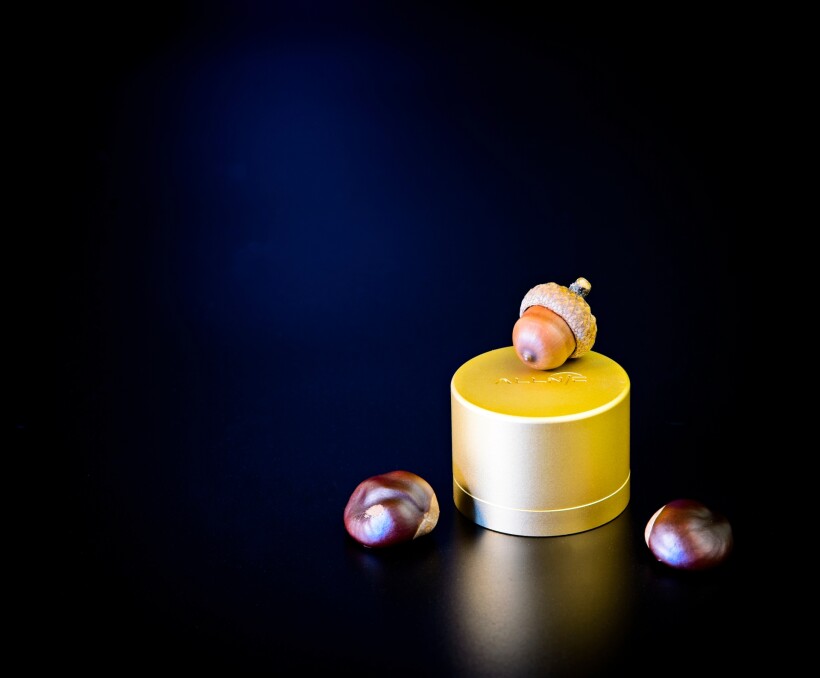
Design
Allnic’s Amber is the more expensive of the two currently offered cartridges. It seems that either the names were derived from their colors (most likely), or the colors were matched to the names. The Rose is (more or less) red, and the Amber (more or less) amber. The latter arrived in a surprisingly large, flat box. Its size suggested that it could easily fit 6 or maybe 8 pickups. In the outer cardboard box I found another, elegant, navy blue one with the company’s logo and a large, yellow dot indicating, I suppose, the model (yellow, so Amber). Inside the box, lined with thick protective foam, I found several elements. The most prominent one was a golden, metal, cylinder-shaped box with a twist-off lid. That’s where I found, screwed to the bottom, the golden, I mean amber, cartridge. I have to admit it looks great. Beauty is a matter of taste, of course, and I don’t even like the golden color, and yet the sight of the Amber mounted in my yellow (Kevlar) tonearm definitely pleased the eye. In the main box, next to the metal can, equally securely embedded in the foam, were four screws and a key that helps to secure the pickup in a headshell using a proper pair of said screws. There was also a quite original, plastic, removable stylus guard, and a small bubble level. The last element was a nicely printed leaflet with a photo and the technical specifications of the Amber.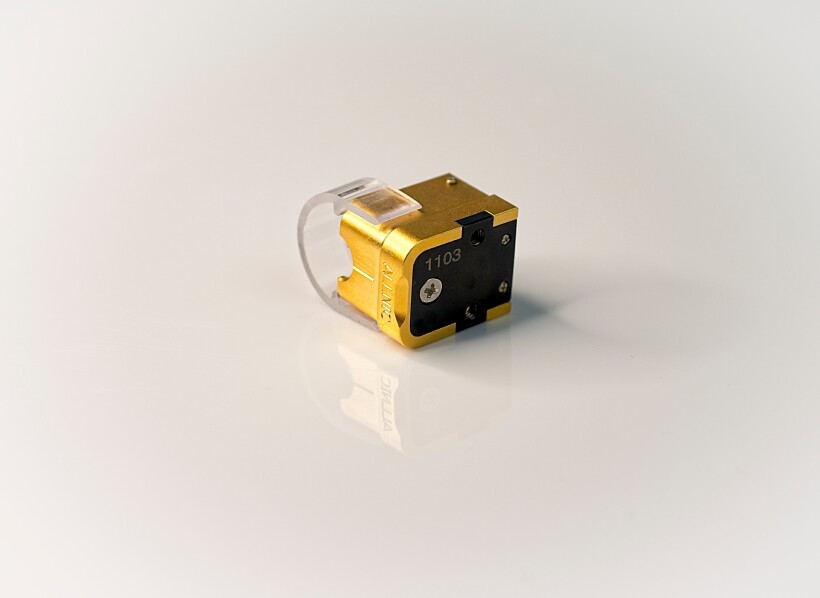
The Amber is a low-level moving coil (MC) cartridge with 0.35 mV output and an internal impedance of 9 Ω. The manufacturer declares a compliance of 10 x 10-6 dyne / cm (100 Hz), and the recommended VTF of 2 g. The Amber features a body made of 5052 duraluminum that’s finished in … I would say gold, although the name suggests amber. The designer went with a Fritz Gyger S stylus on a pure boron cantilever for this model. In the description on his website, a newly developed rubber suspension and coils made of CCA (Copper Clad Aluminum) are mentioned. The weight of the cartridge itself is also important, as it looks very robust and heavy, but actually weighs only 11g. The pickup is equipped with threaded (thank you!) mounting holes with a standard spacing, which makes the montage simple (as opposed to the situation where the holes are not threaded and you need to use nuts with the screws and you’re not in your 20ties or 30ties anymore…). Its regular shape and a clearly visible stylus make the set up relatively simple, but still, considering the fact, that it is a Fritz Gyger S, one should take particular care when setting a correct azimuth.
Funny fact: setting the Allnic Amber up took me less time than the over three times cheaper (yet excellent for its price) Phasemation PP-200, which I tested directly before the Korean cartridge. The only “correction” applied during the auditions was the change of the VTA. My J.Sikora tonearm comes with an optional VTA on-the-fly adjustment, which allowed me to determine the optimal VTA (slightly shifted up) within minutes. So actually during my listening sessions the arm was not positioned perfectly parallel to the record, as that’s when it sounded best to my ears. This is obviously a matter of personal taste, but if you have an option of adjusting VTA in your tonearm, be sure to experiment with it while listening to the Amber.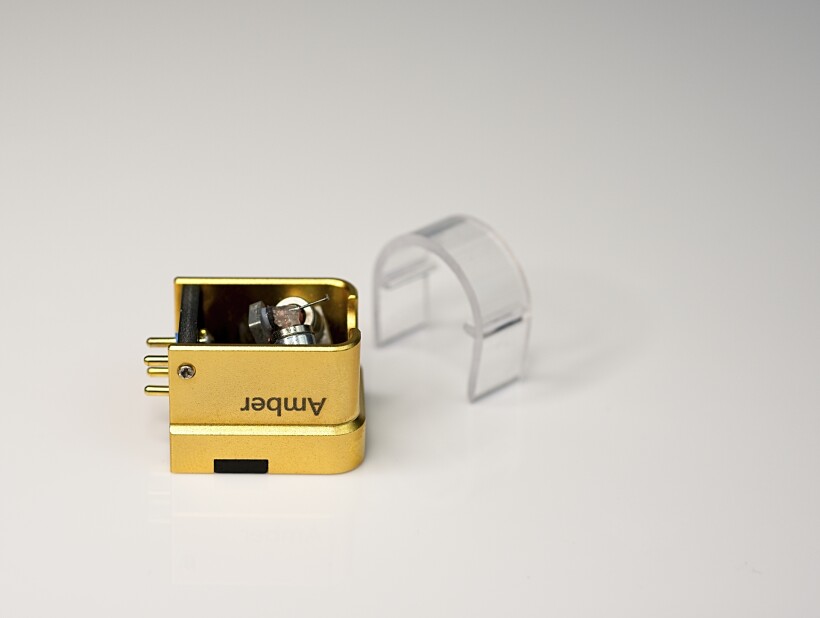
Sound
The cartridge was mounted in Janusz Sikora’s KV12 tonearm on his Standard Max turntable. During the test I used my own ESE Lab Nibiru phono preamplifier (solid-state with current, not voltage, gain stage and output, see test HERE) interchangeably with another solid-state, the GrandiNote Celio (see test HERE). At some point I paired the Amber also with Allnic Audio’s own H-5500 (review pending). I settled on the recommended VTF of 2g.
One of the first records I listened to was entitled “Standards”. It was recorded by Marcin Wądołowski with his trio, as a tribute to Marek Bliziński and Jarosław Śmietana, two of our great jazz guitarists who left us way too early. Although a guitar is obviously the central element in most of the very well-made recordings, my attention at first was actually drawn to the drums. Not because they sounded particularly strikingly, and certainly not showy, but because while playing in the background, they still sounded very clear, precise, with great definition of each beat. I had to give a lot of credit for such an impressive presentation to the Amber, as it perfectly separated instruments even in the small space the producer of this recording placed all the musicians in. The Korean cartridge also proved highly resolving, delivering an abundance of details and subtleties accurately read from the groove. This feature contributed to a very good differentiation in terms of both tonality and dynamics, which translated into a very accurate, natural sounding presentation. This is why the drums sounded fast, taut, and with authority while cymbals seemed so crisp and vibrant, even when only gently touched, but still impeccably pure when hit with full force.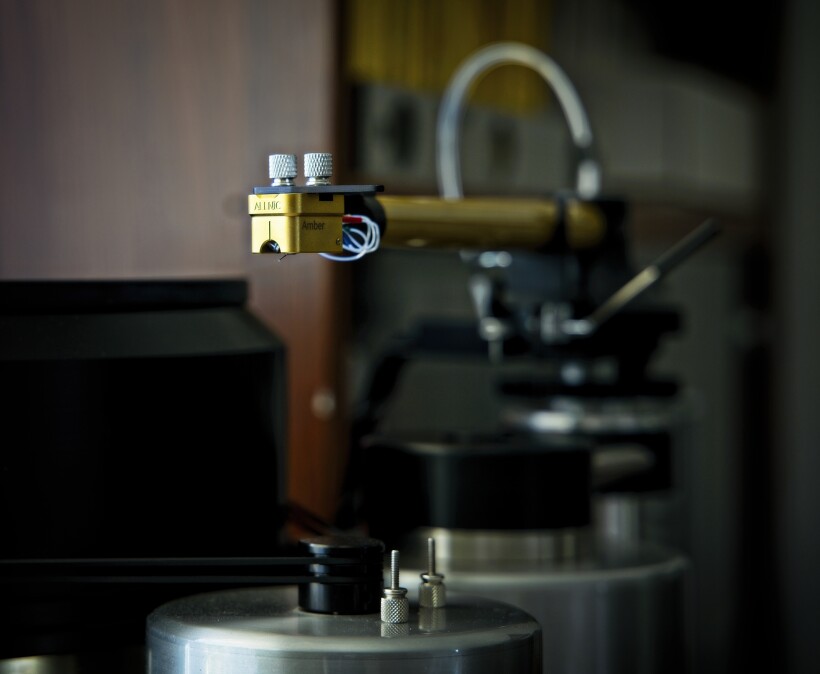
Although there is little to nothing to complain about when discussing the Amber’s dynamics because in terms of both the macro and the micro scale, it can be easily considered a model to follow for many competitors, at the same time it does not provide the same level of energy and punch as some other pickups I know, nor does it quite match their drive and „raw power” that come particularly handy when playing rock or metal tracks. My own Air Tight PC-3 and the My Sonic Labs Eminent EX, tested at the same time (both from roughly the same price range), in comparison, delivered even more energetic, livelier and more punchy sound. The key here is the phrase “in comparison”, because if it wasn’t for having these two at hand, I would have probably not paid any attention to it. When forgetting about my task of assessing the Amber, or comparing it with other cartridges, just focusing on the music, including metal, (Peter Gabriel, Aerosmith, AC/DC), I enjoyed it, had fun and never missed anything in the presentation delivered by the reviewed cartridge.
It is worth mentioning that the two aforementioned pickups, although they come from different brands, were actually designed by the same man, Mr. Yoshiaki Matsudaira. This Japanese master has his own vision of sound and he implements it with the help of certain solutions in all his creations, which leaves a certain sonic mark on all of them, one that you can pick up when listening to them. The Allnic Audio Amber in comparison (!) impresses with the inner calm of the presentation, lack of haste or nervousness, a perfect, precise layout of all elements of music, even of the most complex performances (like orchestral music). Everything in its sound has its place, each element has a role to play, and the Amber makes sure that they all do what they are supposed to, without jumping out of line, without the impressive, but not always desired spontaneity, calmly and at the right pace. It is an equally addictive sound, also capable of captivating the listener’s attention, just using different, less striking (but equally effective) means.
Although the music’s flow on the already mentioned album by the Marcin Wądołowski Trio is rather slow and relaxing, due to the wealth of so precisely presented information, it wasn’t boring, but rather highly immersive. It was presented as a kind of slowly unfolding story, one without any violent events, sudden changes in pace, twists, and yet told in a truly captivating way. This is one of the great advantages of the Allnic Amber, which numerous following albums only confirmed, i.e., the way that it attracts the attention of the listeners and gets them involved in whatever (good) music story they decide to play. The Amber owes this quality largely to the exceptional fluidity and smoothness of its presentation. The latter though, is very natural, as when needed, sharper or brighter tones are there, accurately conveyed in a way that strongly reminded me of live music. After all, various instrument do sometimes sound sharp, bright, even piercing, and with lot of vocals come also sibilants, and while listening to them live we do accept them as a natural part of performance not an annoyance. It is not always so when listening to a recording but the Amber seems to have this quite unique property, thanks to which we perceive these types of performance elements in a similarly natural way.
Let me get back for a moment to the issue of stereo imaging. On the aforementioned studio recording, the sound engineer created a stage that is narrow, yet quite deep, with each instrument having a clearly defined spot on it. The tested cartridge accurately portrayed said idea, and I am talking not only about the positioning of the musicians within the width of the stage, but also in its depth, as well as in determining the size, including the depth, of each individual phantom image. In combination with the beautifully natural, rich with details and subtleties, smooth and coherent sound, it created an exceptionally realistic, tangible musical image. All I had to do, was to close my eyes for the musicians to materialize in front of me, each of them occupying a certain three-dimensional space, having shape and weight, and the distances between them were also clearly marked. When we add quite a high level of energy (no, it’s not a mistake – it was not as high as with Mr. Matsudaira’s cartridges, but still high) the sound carried, lack of which is one of the issues differentiating most recordings from live music, the final sonic result is very convincing and, again, immersive.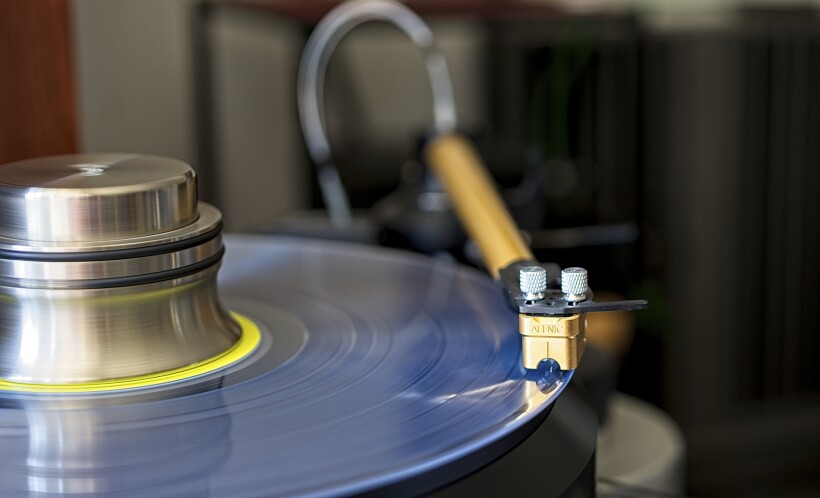
Albums with electronic music, such as the exceptionally high quality release of ALAIZASTARY’s “Jutro?”, or MoFi’s Dead Can Dance’s “Spiritchaser” and last but not least Marek Biliński’s last year’s audiophile release on clear vinyl, showed me a slightly different face of the Allnic Amber. This face turned out to be more lively, more energetic, with a tight, fast, well-differentiated but at the same time powerful bass (but only when needed – especially on the “Jutro?”), extending even lower, with even more visceral energy (especially on the DCD). Even in the latter case, however, the Korean cartridge presented its seemingly inherent moderation. What I mean by that is that there was always only as much bass as required for particular recording, never more. It never lost control, loosened or „fattened up” the bass, or added anything on its own. These albums also confirmed the spacial capabilities of the Amber. Earlier, I noticed that the Allnic Audio cartridge was able to precisely place “natural” phantom images on stage and the latter each time was of a right size for the recording. Now, with electronic albums, it impressed me with rendering an even bigger space, one that came from the minds of recording engineers rather than the natural acoustics of the room or venue, with out-of-phase sounds coming to me from all over the room.
Listening to Spyro Gyra’s “Fast forward”, I finally fully appreciated the Amber’s class in a, so far not that obvious, area, namely conveying a fast, well-defined attack and the overall high purity and transparency of the sound. It was the definition of the attack, the speed of tight, precise impulses that smoothly (or not, if there was no such need) transitioned into the sustain, and then to a long, full decay phase, that made such a huge impression on me. An interesting fact regarding this album is highlighted on its cover – it was recorded digitally. I can „see” analog purists frowning right now, although today most of the vinyls are produced from digital files/recordings (its’ just that today nobody praises this fact on a cover). Yet, I play this album all the time, also on very expensive rigs, and it always sounds really good. Its “digital” nature is reflected in the exceptional clarity of the sound, which at first glance may even seem bit bright, but it is really not. Nevertheless, this is an excellent tool for testing various components (not only analogue ones), as if there is any issue in terms of brightness, harshness, lack of proper weight / richness or smoothness of the sound, or if a said component is overly (!) analytical, the Spyro Gyra starts to sound rather unpleasant. With such an excellent, highly musical and involving cartridge as Allnic Audio’s top, the Amber, one would never even think about fast-forwarding it… :). The sound was fast, open, “fresh”, so to speak, invigorating, and the drums, or electric and electronic bass, reminded me every now and then that there was a lot going on in the lower part of the range, and that there was a lot of power there that could be used at a moments notice, but only when needed.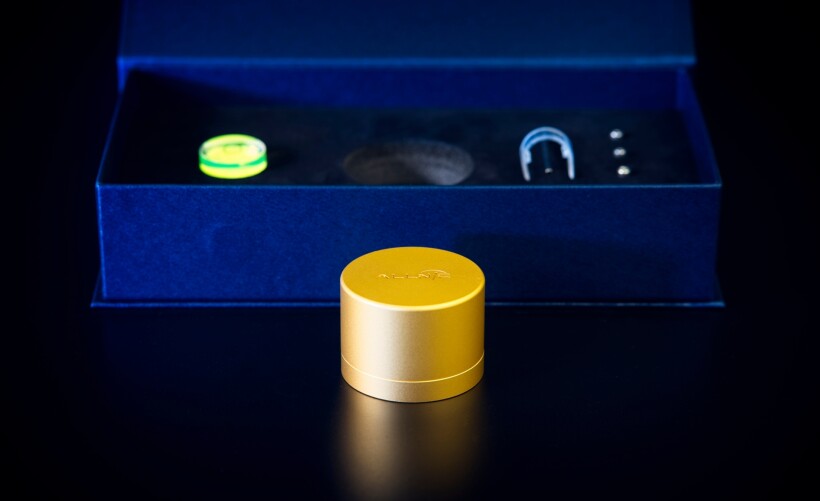
In order to once and for all clarify the issue of the dynamics and energy transfer capabilities of the Allnic Amber, I reached for a relatively recent, fantastic purchase, i.e., a live recording of the legendary group, SBB, with a guest performance by Sebastian Riedl – the “100% Live @ Riedel Music Club Stage”. This is a surprisingly good (even if not audiophile grade) recording of the concert celebrating a grand opening of the Tychy-based club named after the Polish blues legend, Ryszard Riedel (father of Sebastian). The elements that were so well captured on the tape (or in a file, more likely) are precisely the incredible energy, dynamics and atmosphere of this unique event. And those who know SBB probably can guess that there were also some almost lyrical moments with the extraordinary vocal by Józek Skrzek, which, thanks to the Amber, sounded magical.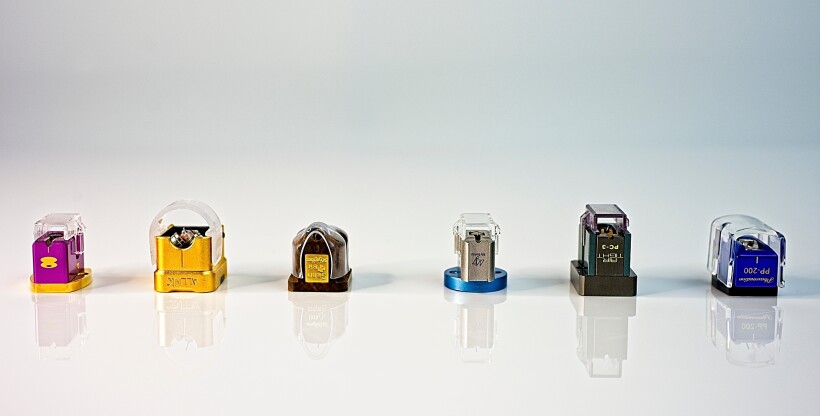
I listened to this album with each of the aforementioned cartridges and a few more. While My Sonic Labs and Air Tight were a bit superior in terms of conveying this pure, raw energy of live performance, the faithful presentation of the vocal or the recreation of the unique, electric atmosphere of this event was the domain of the Amber. The Korean cartridge showed every aspect of what was happening on stage very well, presenting a proper depth, not bringing the foreground closer and never forgetting to give me an insight into what was happening in the back (mainly drums, but also one of the guitars seemed to be placed in this area). Listening to this album, I realized once again how much (due to the pandemic, of course) I miss live music. Let’s hope that it will change soon, and once it does, I will have to go to this club in Tychy, because judging by what I heard with the Amber from this album, I will find an absolutely unique atmosphere there, which live performances are really about, aren’t they?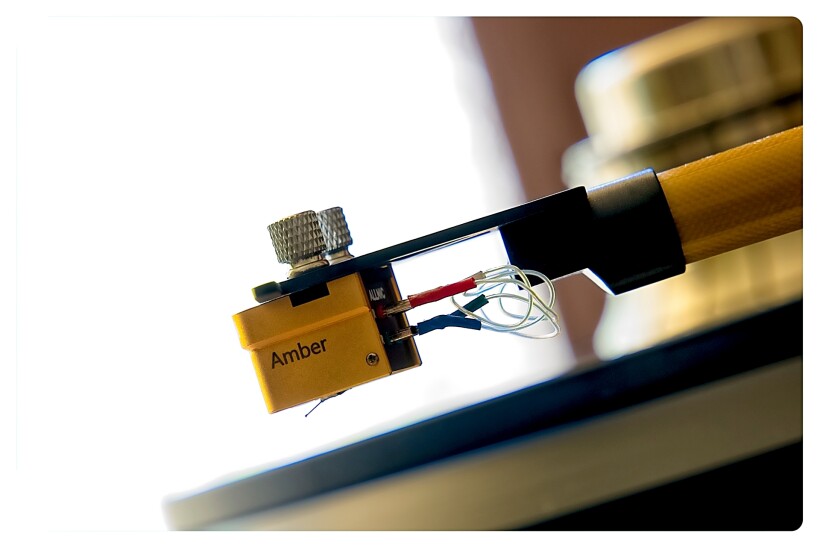
Summary
I have already mentioned that the Allnic Audio Amber, developed by Mr. Park, is a bit of a different type of animal than, for example, Mr. Matsudaira’s cartridges (My Sonic Labs, Air Tight, Murasakino Sumile and others). It reminded me more of a once owned Koetsu Black Goldline, or the recently tested Miyajima Laboratory Saboten, i.e., cartridges that are very musical, fluid, sounding very pleasant to the ear, and at the same time offering good resolution. Compared to these two, however, the Amber would be a step forward; i.e., it sounds even smoother, more coherent, and the best term I can offer you for its performance is: organic. It is also more resolving, delivering clarity and precision at a higher level than the aforementioned cartridges, and it sounds more transparent and dynamic. The combination of all these features allows it to be an even more versatile proposition for music lovers. It doesn’t shy away from any music genre, although it is hard to deny that it truly shines when it comes to vocal and acoustic music, including classics. Yet, I believe that fans of electric jazz, blues or even rock, or in other words recordings based on electric guitars or Hammonds, will also surely appreciate how remarkably fluid, coherent and natural a performance the Amber has to offer.
Technical specifications (according to the manufacturer):
- Type: Moving Coil
- Output voltage: 0,35 mV / 5cm sek / 1 kHz
- Internal impedance: 9Ω
- Compliance: 10 x 10 – 6 dyn / cm (100 Hz)
- Recommended VTF: 2g
- Channel separation: > 30 dB
- Channel balance: within 0,1 dB
- Frequency range: 20 Hz – 30 kHz
- Body: duraluminium 5052
- Stylus: Fritz Gyger S, boron cantilever
- Weight: 11g
Prices (when reviewed):
- Allnic Audio Amber: 4.900 USD
Manufacturer: ALLNIC AUDIO
Distributor: 4HiFi
Associated equipment:
- Digital source: a passive, custom server with WIN10, Roon, Fidelizer Pro 7.10, JCAT NET XE and JCAT USB XE cards with FERRUM HYPSOS power supply, KECES P8 (mono) linear power supply for the server, JCAT USB Isolator
- D/A Converter: LampizatOr Pacific +Ideon Audio 3R Master Time (USB signal regenerator)
- Analogue front end: J.Sikora Standard MAX turntable, J.Sikora KV12 tonearm, AirTight PC-3, phonostages: Grandinote Celio mk IV, ESE Lab Nibiru V 5.
- Power amplifiers: GrandiNote Shinai, Allnic Audio T-2000 30th Anniversary, Audio Reveal Junior
- Preamplifier: Audia Flight FLS1
- Loudspeakers: GrandiNote MACH4, Ubiq Audio Model ONE Duelund Edition.
- Interconnects: Hijiri Million, Hijiri HCI-20, TelluriumQ Ultra Black, KBL Sound Zodiac XLR, David Laboga Expression Emerald USB, David Laboga Digital Sound Wave Sapphire Ethernet
- Speaker cables: LessLoss Anchorwave
- Power cables: LessLoss DFPC Signature, Gigawatt LC-3
- Power: Gigawatt PF-2 MK2 and Gigawatt PC-3 SE Evo+; a custom power line with Gigawatt LC-Y in-wall cable; Gigawatt G-044 Schuko and Furutech FT-SWS-D (R)
- Racks: Base VI, Rogoz Audio 3RP3/BBS
- Anti-vibration accessories: ROGOZ-AUDIO SMO40 and CPPB16 platforms and ROGOZ AUDIO BW40MKII feet, Franc Accessories Ceramic Disc Slim Feet and Wood Block Platform




